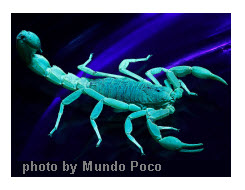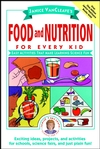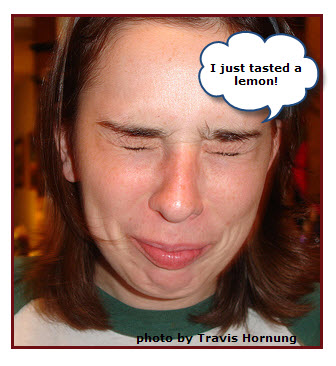Facts About Bones! The hard part of bone is made up mainly of the chemical calcium phosphate. Fibers called collagen (a protein) run through the calcium phosphate. The calcium phosphate gives bones firmness and strength, and collagen gives them flexibility. The vinegar reacts with the calcium phosphate, thus removing the calcium from the bone and […]
Appetite
Question: Why do I get hungry? Answer: Being hungry means you have an appetite. Appetite is the desire to eat food and is felt as hunger. A part of your brain called the hypothalamus sends messages that you are hungry or thirsty. Food and water are necessary for life. Food and water are the nutrients […]
Phosphors
Question: Why do scorpions glow under a black light? Answers: The scorpion has phosphors in its exoskeleton. A phosphor is a term used to describe any substance that can absorbs UV radiation and release visible light. Both UV radiation (light) and visible light are forms of electromagnetic radiation-EMR. The UV light has much higher energy […]
Investigations about Food and Nutrition
How does milk help me grow? Where do vitamins come from? Do carrots really strengthen my eyesight? Find out these answers-in Janice VanCleave’s Food and Nutrition for Every Kid. To the delight of children, parents, and teachers everywhere, America’s favorite science teacher brings a welcome addition to the popular Science for Every Kid series. Through […]
DNA: Project Questions
Step 4: Project Questions A science fair project question should identify two variables: the independent variable the dependent variable. Example Questions for the DNA Discovery Investigation 1. The dependent variables are in red type. This variable can usually be identified from the purpose of the research Discovery Investigation. For the DNA Discovery Investigation, the purpose […]
Fruit vs. Vegetables
A fruit the the part of a plant that contains seeds. Fruits have a fleshy covering around seeds. Fruit with one or more seeds inside are made by flowers. Pumpkins, apples, and tomatoes are examples of fruit. Each has seeds inside that can grow into new plants Vegetables, such as lettuce, turnips, and carrots are […]
Senses: Taste
I love the taste of lemons. When I was a kid, one of my favorite things to do was to read comic books and eat lemons. Sometimes I ate rind and all. I prepared each lemon by squeezing them so that the juice comes out easily. My technique for preparing my lemons was to place […]
Tongue: Taste Buds
Free science experiment about taste buds for kindergarten and younger. Link to free science experiment ideas about taste buds for elementary and/or middle school.
DNA Extraction: Human
DNA from Human Cheek Cells This video not only gives you detailed instructions for separating DNA from human cheek cells, but there is a graphic explanation of the process. Note: 1. Eight grams of table salt is about three-fourth teaspoon. 2. Use salt without Iodine.
Night Vision
Question: Why can nocturnal animals, such as owls and cats, have better night vision than daytime hunters? Answer: Animals that hunt at night have more rods in their eyes than do other animals, including you. So what are rods? The retina is the back innermost part of the eye of animals. In the retina are […]
- « Previous Page
- 1
- …
- 17
- 18
- 19
- 20
- 21
- …
- 26
- Next Page »






